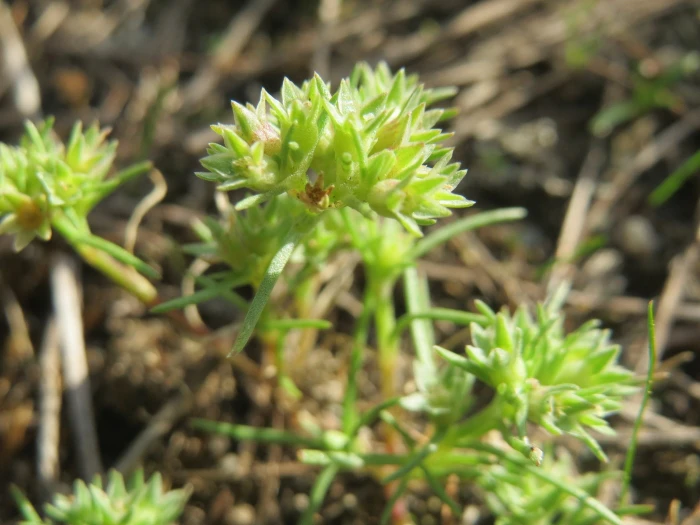German Knotweed
(Scleranthus annuus)
German Knotweed (Scleranthus annuus)
/
/

Andreas Rockstein
CC BY-SA 4.0
Image By:
Andreas Rockstein
Recorded By:
Copyright:
CC BY-SA 4.0
Copyright Notice:
Photo by: Andreas Rockstein | License Type: CC BY-SA 4.0 | License URL: http://creativecommons.org/licenses/by-sa/4.0/ | Rights Holder: Andreas Rockstein | Publisher: iNaturalist | Date Created: 2017-10-17T15:59:39-07:00 |






Estimated Native Range
Climate Requirements for Gifu-shi, Japan
| This Plant | Your Site | Plant Suitability for Your Location | ||
|---|---|---|---|---|
| • Precipitation | 5" - 145" | 78" | Aquatic | Aquatic |
| • High Temp. | 41°F - 101°F | 89°F | Your summer temperatures are normal for this plant. | Excellent |
| • Low Temp. | -35°F - 69°F | 31°F | Your winter temperatures are normal for this plant | Excellent |
This plant may not grow well at your location - your precipitation is too high.
Summary
Scleranthus annuus, commonly known as German knotweed or annual knawel, is an annual or biennial herb that is native to a variety of habitats including grasslands, open woodlands, and rocky slopes in Europe, Asia, and North Africa. It typically grows to a modest height of up to 6 inches (15 centimeters) and forms dense, mat-like patches. The plant has tiny, inconspicuous green flowers that may go unnoticed, blooming from late spring to early autumn. Its foliage is bright green and needle-like, adding a fine texture to garden settings.
German knotweed is valued for its low-growing, ground-covering habit, which makes it useful for filling gaps in rock gardens, green roofs, and as a living mulch to suppress weeds. It thrives in poor, sandy, or rocky soils with good drainage and prefers full sun to part shade. While it is drought-tolerant once established, it benefits from occasional watering during prolonged dry spells. Annual knawel is not commonly affected by diseases or pests, but it can self-seed prolifically, which may lead to unwanted spread in the garden.CC BY-SA 4.0
German knotweed is valued for its low-growing, ground-covering habit, which makes it useful for filling gaps in rock gardens, green roofs, and as a living mulch to suppress weeds. It thrives in poor, sandy, or rocky soils with good drainage and prefers full sun to part shade. While it is drought-tolerant once established, it benefits from occasional watering during prolonged dry spells. Annual knawel is not commonly affected by diseases or pests, but it can self-seed prolifically, which may lead to unwanted spread in the garden.CC BY-SA 4.0
Plant Description
- Plant Type: Herb
- Height: 0.1-0.3 feet
- Width: 0.5-1 feet
- Growth Rate: Moderate
- Flower Color: Green
- Flowering Season: Spring, Summer
- Leaf Retention:
Growth Requirements
- Sun: Full Sun
- Water: Low
- Drainage: Medium
Common Uses
Low Maintenance
Natural Habitat
Grasslands, open woodlands, and rocky slopes
Other Names
Common Names: German Knotgrass, German-Knotweed, Knawel
Scientific Names: Scleranthus annuus, Scleranthus annuus var. fasciculatus, Scleranthus ceretanus, Scleranthus marginellus, Scleranthus tauricus, Scleranthus tauricus
GBIF Accepted Name: Scleranthus annuus